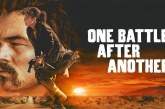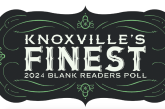Miami rap group pushes the envelope and more on 1989 release
In 1989, rap music was in the midst of rebranding itself, as fun early releases from LL Cool J and Run-DMC were giving way to rawer and realer releases from outfits like Public Enemy and N.W.A.
Public Enemy hailed from the brainier end of the spectrum and called for radical civil rights reform, while N.W.A. exposed listeners to the seedy underground gang and drug cultures of Los Angeles in general and Compton in particular. Both of those groups remain relevant today, as their sociopolitical statements left a lasting impact on teenagers coming of age in the late ‘80s – and on popular culture at large.
Throughout its brief history, rap music often has been labeled offensive or obscene, as it explores issues in the most unfiltered of ways. Quite frankly, though, many folks who were adults before that era just don’t understand the genre.
But in 1989, Miami group 2 Live Crew pushed the boundaries – of what constitutes art, of what is considered to be in good taste and of what is publicly acceptable material – with their third album, “As Nasty as They Wanna Be.”
While it immediately became a hit with both critics and teenagers (of which I was one at the time, living in Southern California), it also was considered to be so obscene that record store clerks actually were arrested for selling the album. By today’s standards, that is utter ridiculousness, but it happened. By today’s standards, too, the material certainly is raunchy, but it’s hard to envision it causing all that much of a stir nationwide.
Like most rap at the time, the LP samples songs from other artists. On “As Nasty,” we find that works of Jimi Hendrix and Van Halen were used, among others. Lyrically, Luther Campbell (aka Luke Skywalker at the time) and his crew were creative, but the frankness of their collective delivery resulted in the album being legally declared obscene by the U.S. District Court for the Southern District of Florida – a ruling that later was overturned by the 11th Circuit.
Despite making 2 Live Crew the primary target of Tipper Gore and the crowd pushing hard for parental warning labels, the record was certified double platinum by the next year. In addition, it spawned three high-charting U.S. singles including “Me So Horny,” “C’mon Babe” and “The F*** Shop.”
Many of the song titles on the LP can’t be repeated here, in fact, but the album signified a bold new direction for modern music and perhaps makes a political statement of its own. It doesn’t call for social justice, nor does it detail the difficulty of life as a minority in South Central, but it had a lasting effect on issues regarding free speech and artistic vision.
As it was released nearly three decades ago, its relevance musically perhaps has waned. It is a classic of sorts, but it’s also an acquired taste that’s not for everybody, as it mainly proves that 2 Live Crew could be as nasty as they wanted to be in taking vulgarity and sexual explicitness to new extremes.








